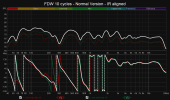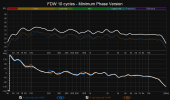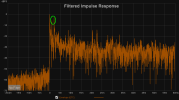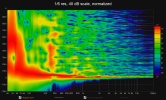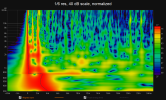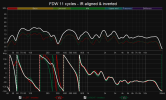I been going down the rabbit hole with the whole room correction/REW/Dirac ever since I got my 2nd sb2000 and DDRC-24 during last Christmas. Prior to purchasing Dirac this week. I was using alignment tool in REW and set up proper delay time in minidsp to get 2 subs to play nice with each other. And then I create an EQ in REW to smooth out all the bump in the subwoofer response up until crossover point, which I am setting at 60hz for Kef R7. That works out pretty well as I get much smoother bass response and I was happy until I deiced to get Dirac and use it full range. My living room is an L shape with vaulted ceiling so not very ideal room and I am hoping Dirac would get the best out of my system.
After I run calibration using couch settings (9 measurements), I see that there is a huge null at 300hz. This null is visible before Dirac as well but not too bad at -6dB but with Dirac the null is at -9dB. this null is at its worst at MLP. I decided to measure each L and R speaker separately at MLP but both doesn't seem have to this null so I am guessing there is phase/cancellation between the 2 speaker due to the room layout? I played around with alignment tool in REW but this time with left and right speaker and I find that if I put 25ms delay on left speaker, I get much better result throughout entire FR.
Is it normal/recommend to put delay on 1 speaker in a stereo setup? Is there any other approach I can take to get rid of the null? Measurement for L/R speaker included
After I run calibration using couch settings (9 measurements), I see that there is a huge null at 300hz. This null is visible before Dirac as well but not too bad at -6dB but with Dirac the null is at -9dB. this null is at its worst at MLP. I decided to measure each L and R speaker separately at MLP but both doesn't seem have to this null so I am guessing there is phase/cancellation between the 2 speaker due to the room layout? I played around with alignment tool in REW but this time with left and right speaker and I find that if I put 25ms delay on left speaker, I get much better result throughout entire FR.
Is it normal/recommend to put delay on 1 speaker in a stereo setup? Is there any other approach I can take to get rid of the null? Measurement for L/R speaker included

